Springtails are tiny jumping insects most commonly found in damp soil. However, their presence alarms homeowners by appearing in large numbers in moist areas. Such as in kitchen sinks, bathtubs, swimming pools, potting soil (moist soil). In this article. let’s discuss how to get rid of springtails.
What Are Springtails?
Springtails are no longer considered insects and a part of the family Collembola (between crustaceans and insects). They do not have wings and move by jumping and crawling. Instead, they are always in search of moisture. Once the moisture levels are lower outdoor, they get into houses and gather in rich water places (garages, basement, and in the soil of potted plants).
Springtails appear in spring and early summer but can be found in moist soil or environments all year round. They do not bite pets, humans, or spread diseases in plants, or damage potted houseplants. But their occurrence is noisy and unpleasant. They cover the surface of swimming pools and resemble fleas due to their jumping movements.
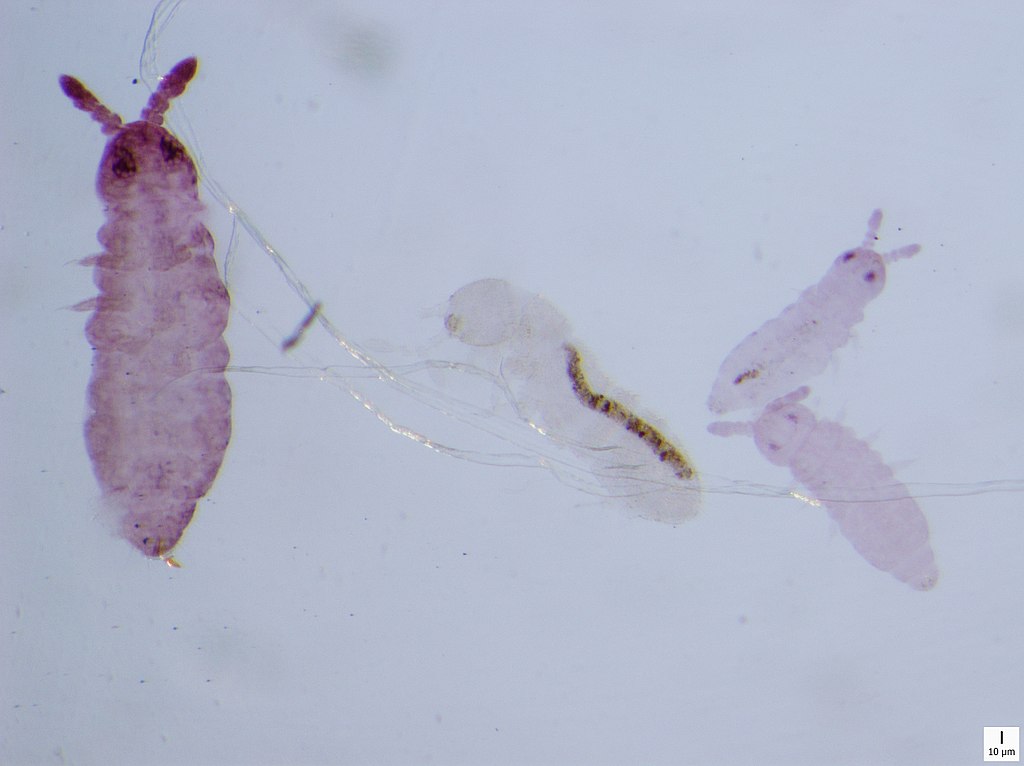
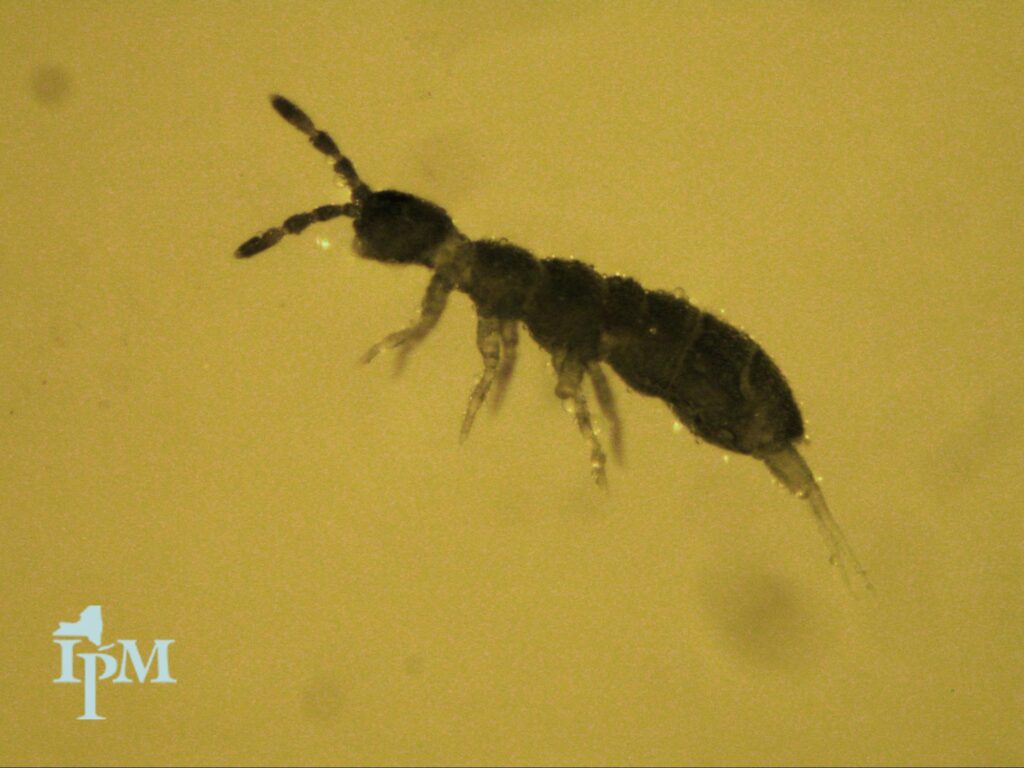
Identification Of Springtails
Springtails appear as small delicate insects with varying colors. First, they appear in all shades of gray, black, brown, and white. Then, in clusters form, springtails become more transparent and resemble balls and swatches of fabric.
Finally, they become more apparent and visible even when they spring into the air together. This jumping is due to an external body part, the furcula (a tail-like mechanism), folded under its abdomen. When furcula is released, it pops the tiny bug a few inches into the air.
Springtails are 1/16 inches or 1.57 mm long and are not considered actual insects because of their internal chewing mechanism, while the other insects have external chewing mouthparts. The adult springtails and immature stages of springtails only differ in color size. The adult appears blue, dark brown, black, and greyish. While the immature stages only appear as whitish.
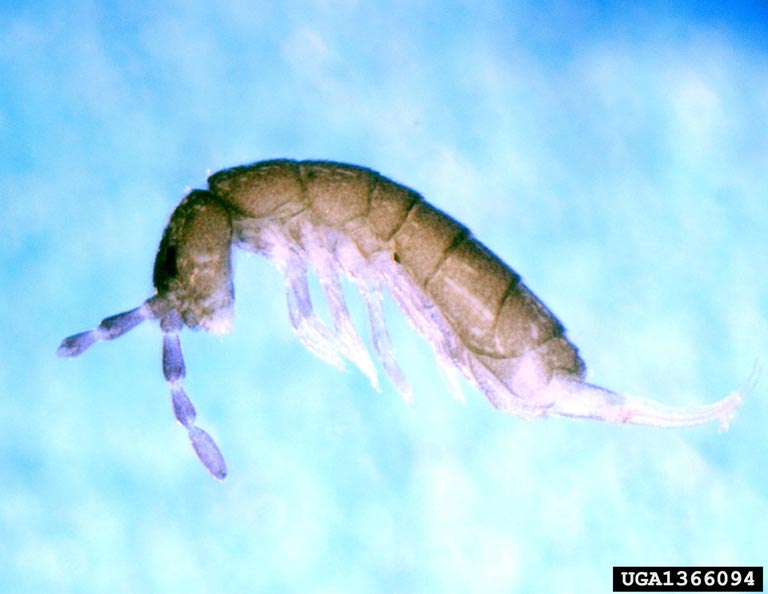
Habitats Of Springtails
They live in damp soil. Especially the grounds modified with organic mulch, leaf litter, and compost. Springtails also live under barks and decaying wood. They lay their round eggs in groups form where organic matter is abundant. Springtails feed consists of molds, algae, dead or decaying organic matter plant parts, and fungi.
When the outdoor places are dry, all the springtails search for moist areas. Therefore, they may crawl indoors or in other favorable sites (higher moisture), such as swimming pools, washbasins, and kitchen sinks, bathtubs.
Springtails enter homes through open doors, window screens, and vent pipes. They may attract light and gather around lighted places. After a hot day, they accumulate around buildings in large numbers and enhancing the chance of indoor springtail infestation.
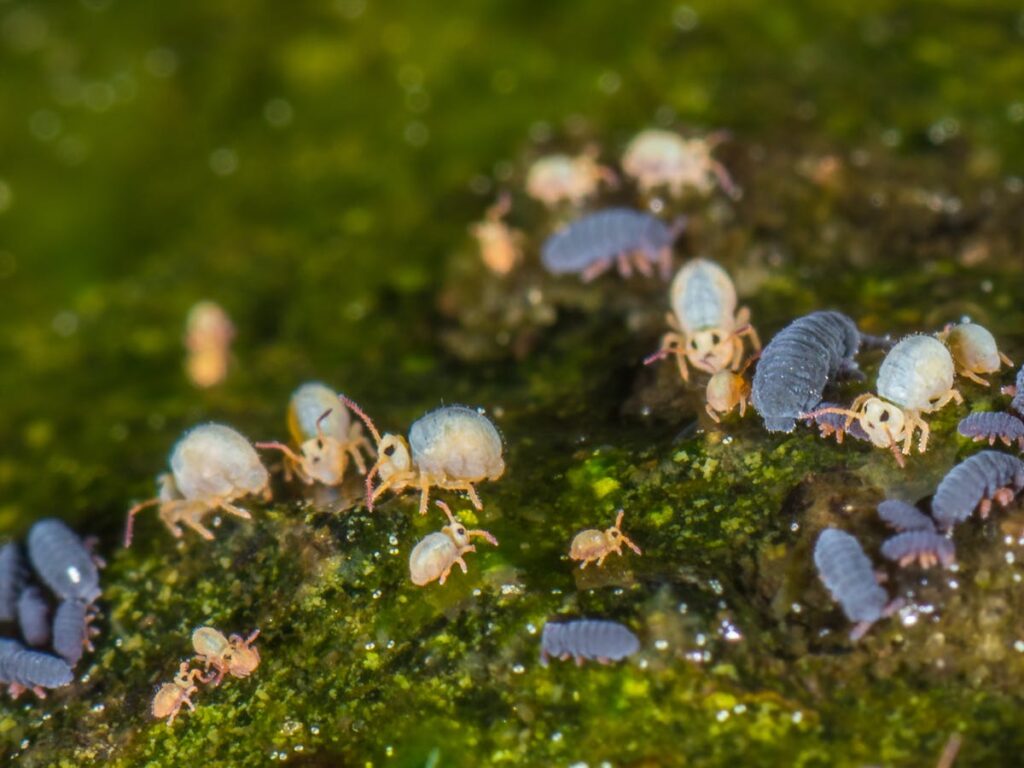
After entering the house, they search for moisture, trapped in places with high moisture levels. Springtails may die soon if they are unable to find moist areas.
Damage Caused By Springtails In Houseplants & Outdoors
Springtails are harmless insects. They do not cause any severe damage to most plants and only feed on decaying organic matter and leaf litter. The excess moisture is their only survival source, and dry places kill them. Therefore, the amount of harm caused by springtails involves little to no damage to houseplants and the outdoor.
But, their presence in homes causes inconvenience to homeowners and potted plants. While in houseplants, the springtails chew on leaves and roots. Because of this, houseplants may succumb to wilting.
In outdoor plants, their damage causes round on young leaves and irregular holes in roots. In addition, the young seedlings may die or wilt due to weaker roots and damaged leaves. In mature plants, there is no significant harm by springtails. However, the springtails rarely cause enough damage to plan for control measures.
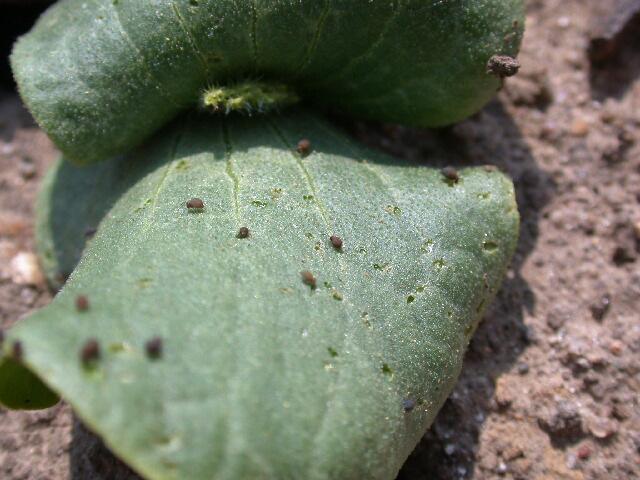
The presence of springtails in buildings causes continuous nuisance and an indication of moisture. Springtails can easily be removed from homes and buildings by forcing the disturbance and removing water.
Related: How To Get Rid Of Springtails In The Soil Naturally? A Comprehensive Guide
Life Cycle Of Springtails
Springtails have only three stages, including egg–hatching to young instars and then turning into an adult springtail. And they reproduce quickly in a period of four to six weeks. First, the females lay eggs singly or in batches form. Then, the male springtails release their sperm cell packets into the soil. Females pick up these sperm cell packets and lay eggs on or inside these packets. The eggs hatch within five to ten days, depending upon temperature.
The eggs hatch into nymphs. The nymphs appear similar to adults but only vary in color and size. They spend as nymphs for five to six weeks and undergo several molting stages before becoming adults. The adults live for two weeks in optimal environmental conditions. After that, the adult continues to molt (up to 50 times) but with little growth.
The springtails live throughout the season and reproduce more than once outdoors. While indoors, they live only a year with not much reproduction. In ideal conditions (potted plants+ moist soil), springtails complete their life cycle quickly and result in population explosions in grounds of potted plants. These higher populations of springtails can be removed from the plant’s soil and damp areas by drying soil.
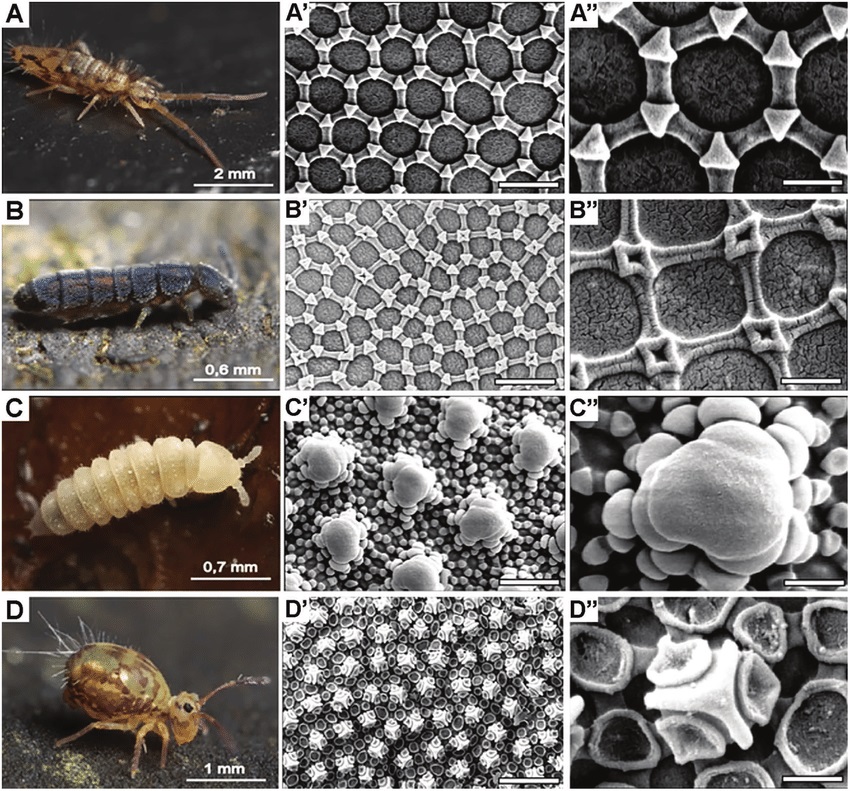
Management Of Springtails
Springtails live in moist areas (washbasin, carpet, kitchen sinks) and the wet plant pot. In addition, many springtails are found in damp soil, damp decaying dead leaves, and straw in the outdoors. They feed on fungi, roots & leaves of young seedlings, algae, and molds.
The management practices for springtails eradication involve chemical pesticides, essential oils such as neem oil, insect growth, and regulators.
Outdoor Management Of Springtails
Since the springtails enjoy damp environments and by altering moisture levels, can be managed. It involves eliminating excessive breeding sites by removing mulch and moist leaves in landscapes and gardens.
The chemical application for the management of springtails is not effective in controlling the long term. But it can be used in integrated pest management programs.
Another best approach to avoid springtail infestation in gardens and landscape consists of removing their favorite places such as moist dead leaves, leaf litter, and decaying organic matter.
It also includes the refrain of adding more compost in soils and organic material until these pests vanish. Because under compacted mulch, the springtail populations thrive.
The other best practice includes allowing the soil to dry completely before watering. It prevents these bugs establishment either sending them away or killing springtails. Because in dry soils, the springtails will migrate and search for wetter places.
Do not overwater the vegetables and ornamentals that host springtails. Otherwise, it will nourish their populations. Over watering conditions are the most favorable habitats of springtails. Let the soil dry first wholly, then water to discourage infestations.
The constant turning of straw mulches and organic heaps exposes the springtail eggs to heat or sunlight, killing eggs and nymphs. At the same time, the adult migrates to other moist and rich places which are moist and rich in organic matter.
Sanitation
Maintain landscapes and gardens properly and remove dead leaves, litter, and wood pieces to retain moisture and attract springtails. Repair broken windscreens to block the entryways of springtails. And do not let water stand in floors, gardens, and landscapes.
Drain the water off bathtubs and basins; it will wash away the insects as well. These simple methods control the infestation of springtails. Finally, do not spray any insecticide in drains and sinks. The springtails that enter the home can easily be removed by vacuuming and sweeping.
Swimming Pools
Indoor Management Of Springtails
In houseplants for the management of springtails, the first method avoids overwatering. Because dry areas repel the springtails and help in the eradication of springtails, the removal of excess moisture will prevent springtails infestation from homes and houseplants. The removal of excess water will prevent springtails infestation from houses.
To keep springtails away from houseplants, maintain proper cleanliness around. Remove and sweep any fallen, dead leaves, grass, and other organic matter.
To repel the springtails from houseplants, use soil with less peat. The potting soil with less peat requires less water. When the potted plants do not have the desired moisture levels for springtails, they will move on and search for other places.
Let dry the soil of potted plants completely. If the soil is dry, the springtails will not find a favorable environment and move to new, more wet places. When the soil is dry, the springtails will ultimately die.
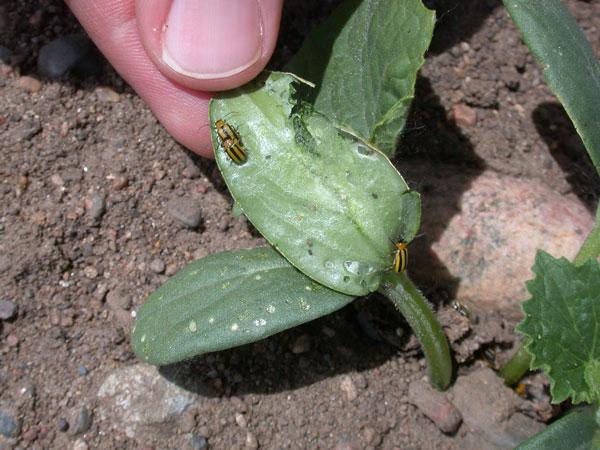
Remove houseplants plants from dark places and relocate them in more ventilation places. The proper positioning of plants will ensure fresh air and natural light circulation. So, it will lower the moisture level in potting soil and leaves.
It is also essential to inspect plants regularly for moisture levels. If there is any excess moisture and insect activity near plants, quarantine the plant outside to allow the plant and soil to dry.
Sprinkle small amounts of diatomaceous earth on plant leaves and potting soil to repel springtails.
If there is an infestation of springtails persists. Then, use a natural, non-toxic soil drench like Sierra Natural Science (SNS) to repel and kill springtails.
Houseplant’s soil with organic mulch, lichen, and mold can be rich springtails food and reproduction sources. So, to keep springtails away, relocate plants in new pots with no sign of springtail food.
To control the infestation of springtails on houseplants, spray the solution of neem oil and water. This solution will suffocate and kill them instantly when sprayed on their bodies.
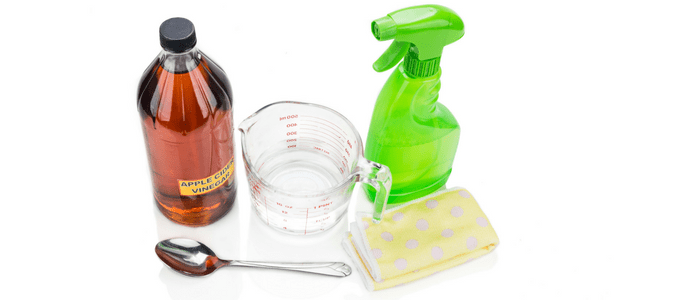
Frequently Asked Questions
Will Springtails Ever Go Away?
Springtails can be scared off through cleaning. By maintaining proper dry conditions in the house, the infestation of springtails can be prevented. The spray of vinegar on springtails and around infested areas will kill them. The high acidity of vinegar rapidly burns and kills them. In houseplants, they can be controlled by spraying concentrated oxygenated bleach around the rim of pots and soil. Also, the spread of diatomaceous earth on the leaves and ground of houseplants repel them.
Does Vinegar Get Rid of Springtails?
Yes, vinegar is highly effective in killing springtails. The high acidic nature of vinegar rapidly burns and kills the springtails. In addition, the direct spray of vinegar on springtail bodies helps get rid of these bugs in homes.
Do Springtails Cause Damage?
Springtails do not cause any harm to humans, bite pets, nor do they transmit any diseases in humans and plants. Therefore, the extent of their damage is not severe, nor it needs any extreme preventive measures. However, their presence is unpleasant and cringy, and if the proper environmental conditions are present, they multiply rapidly and grow in many numbers.
How Do I Get Rid of Springtails in my Houseplants?
There are many ways by which springtails can be kept away from houseplants. These include maintaining houseplants clean and dry because damp conditions and decaying organic matter favor the infestation of springtails. It also contains correct positioning plants for more fresh air circulation and natural sunlight. The air circulation lowers the humid conditions (an unsuitable environment for springtail survival).
Another approach to get rid of springtails on houseplants is moderate water applications. However, too much watering will create a damp environment in the soil and leave for springtails. So, reducing watering intervals will help in the migration of springtails.
How Do you Get Springtails Out of Your Soil?
The simplest way is by keeping the soil dry. Use a non-toxic soil drench to kill the springtails to dry the soil. Use the potting soil with less peat because it will not host the right food (organic matter) for springtails, and they will look for other soils (wetter with organic mulch). Using essential oils such as cedar oil to eradicate the springtails in soil. For this, take equal amounts of cedar oil and water in a spray bottle and sprinkle them in the soil to kill springtails and all other pests of houseplants.
What Do Springtails Look-like?
The easiest way to identify springtails is when they jump in the air. They appear in varying colors ranging from brown to light brown, white, black, and off-white. The adult has oval shape head with segmented antennas.
Sources For Further Reading
- Ipm.ucanr.edu. 2022. Springtails Management Guidelines–UC IPM. [online] Available at: <http://ipm.ucanr.edu/PMG/PESTNOTES/pn74136.html> [Accessed 8 January 2022].
- How to get rid of Springtails. Planet Natural. (2019, November 12). Retrieved January 8, 2022, from https://www.planetnatural.com/pest-problem-solver/houseplant-pests/springtail-control/
- Goldberg, A. (2021, October 28). 6 effective ways to get rid of springtails in houseplants. Bio Pests Organic Pest Control. Retrieved January 8, 2022, from https://biopests.com/6-effective-ways-to-get-rid-of-springtails-in-houseplants/
Know more about plant bugs, check out Winter Moths: How to Get Rid of These Houseplant Enemies?, Effective Ways To Get Rid Of Russet Mites On Houseplants and What are the Best Practices to Get Rid of Thrips on Houseplants?







